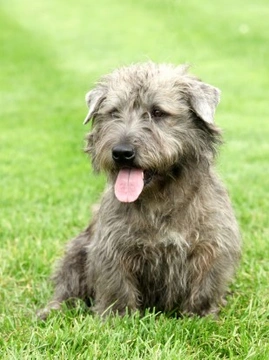
Vulnerable UK Terrier Breeds: Protecting Our Heritage
Despite the popularity of dogs as pets, several of our UK native dog breeds are classed as “vulnerable” by The Kennel Club and other organisations, due to the small number of dogs of the breed remaining within the UK. The Kennel Club classes any UK or Irish native dog breed of which less than 300 individual puppies are registered in any given year as vulnerable, meaning that they run the very real risk of ultimate extinction over the coming decades if their numbers are not increased. With hundreds of pedigree dog breeds in existence across the world, it is only natural that the popularity of any given breed will change over time, and new breeds come into being. It would be a shame, though, if any of our native UK breeds were allowed to die out entirely, and every year The Kennel Club publishes a table of the “at risk” breeds in terms of newly registered births in order to raise awareness of the issue, and promote the popularity of the breeds in question.
The Terrier grouping is the category that contains the highest number of at-risk breeds overall, with 11 terrier breeds currently classed as vulnerable. These breeds are:
Miniature Bull Terrier
The miniature Bull Terrier is a small breed with its origins in the Bulldog, Dalmatian and English White Terrier breeds, and looks just like a smaller version of the regular sized Bull Terrier. In 2011, just 216 new puppies of this breed were registered in the UK.
Dandie Dinmont Terrier
The Dandie Dinmont Terrier is a small Scottish terrier, with short legs and a long body, and a large top-knot of fur on the top of the head. Despite three Dandie Dinmont terrier breed clubs supporting and advocating for the breed, just 98 Dandie Dinmont puppies were born in 2011, a number that has been steadily falling year on year.
Smooth Fox Terrier
The Smooth Fox Terrier was traditionally used for hunting with hounds, and despite being present in large numbers historically as working dogs, remain a relatively rare choice as pets. Due to the hunting with hounds ban and subsequent decline in the hunting industry across the UK, there has been much less call for working hunting terriers as a result, and the Smooth Fox Terrier’s numbers have declined to just 137 new births in 2011.
Glen of Imaal Terrier
The Glen of Imaal Terrier hails from county Wicklow in Ireland, and is a small, plucky and rather comical looking terrier with an undeniable appeal. The Glen of Imaal terrier was traditionally used for both herding work and hunting vermin such as badgers, rats and foxes. Just 67 new Glen of Imaal terriers were registered with The Kennel Club in 2011.
Irish Terrier
The Irish Terrier is one of the oldest terrier breeds, and by the late 1800’s was one of the most popular dog breeds in both the UK and Ireland. The Irish Terrier has a distinctive red coat and a compact, sturdy appearance. However, the breed’s popularity has fallen significantly in recent years, with only 277 Irish Terrier puppies born during 2011.
Kerry Blue Terrier
The Kerry Blue Terrier, sometimes known as the Irish Blue Terrier, is a distinctive, handsome looking dog with a steely blue coat. The breed remains rather uncommon, despite producing the Best in Show winner at Crufts in the year 2000, and just 212 new Kerry Blue Terriers were born in 2011.
Lakeland Terrier
The Lakeland Terrier is a small to medium sized terrier from the Lake District, and is renowned for having a minimally shedding coat that may make it a good choice for dog lovers who suffer from allergies. 247 Lakeland Terrier puppies were registered during 2011, making the Lakeland Terrier one of our vulnerable UK native dog breeds.
Manchester Terrier
The Manchester Terrier was once bred in prolific numbers in order to keep vermin such as rats under control, and these tenacious terriers were more than up to the job. Sharing ancestry with the Whippet, the Manchester Terrier is now an unusual sight within the UK, even in its home city. Just 152 new Manchester Terrier puppies were born in 2011.
Norwich Terrier
The Norwich Terrier is another regional terrier to make the list, being small, personable and plucky. The Norwich Terrier tends to produce small litters that often need to be delivered via caesarean section, contributing to the rarity of the breed. In 2011, just 158 new purebred Norwich Terrier puppies were born.
Sealyham Terrier
The Sealyham Terrier is one of our most vulnerable native breeds, with just 63 puppies being born in 2011. This Welsh dog was originally kept for working purposes, but today makes an excellent pet. They are small and compact, with a signature fringe of longer fur across the eyes.
Skye Terrier
The Skye Terrier is an attractive long haired terrier that makes an excellent pet, but is nevertheless classed as one of the most endangered native dog breeds within the UK. The breed has a long and noble history as the breed of choice for Royalty, with both Queen Victoria and Mary, Queen of Scots owning dogs of the breed. Today, the breed is relatively unknown to many people, due to the small number of dogs of the breed being born each year. Just 44 Skye Terriers were born and registered within the UK during 2011.



